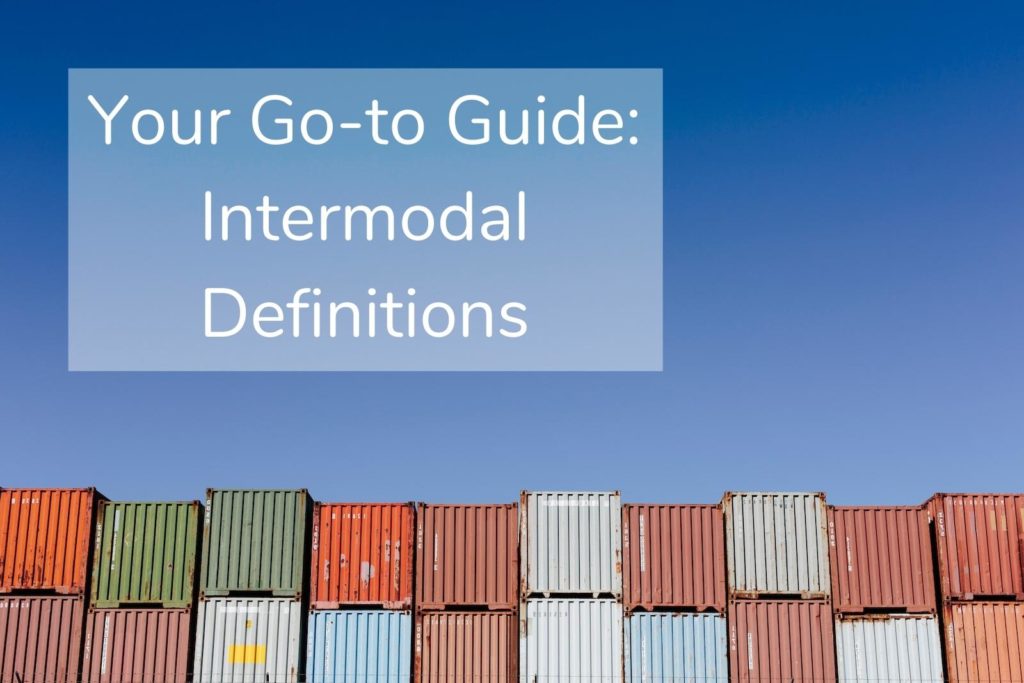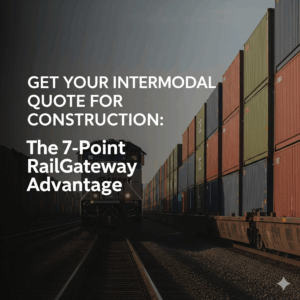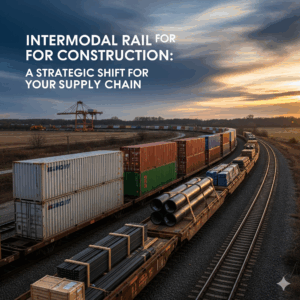Essential Intermodal Definitions Every Business Should Know
Understanding intermodal definitions is essential for anyone involved in logistics, supply chain management, or freight transportation. As intermodal shipping continues to gain popularity in 2025, clarity around the key terms used in the industry becomes a powerful advantage. Whether you are a seasoned logistics manager or a business owner exploring intermodal options for the first time, having a strong grasp of industry terminology ensures smoother operations, fewer misunderstandings, and more efficient communication.
Intermodal transport, by its very nature, involves coordination between multiple transportation modes – most often rail and truck. But this complexity means there are many specific intermodal definitions that guide everything from documentation to equipment usage to contractual responsibilities. If misunderstood or overlooked, these definitions can lead to costly delays, compliance issues, and claim disputes. This guide was created to eliminate that confusion by breaking down the 20 most critical intermodal definitions for modern shippers.
In 2025, the shipping landscape is more dynamic and competitive than ever. The pressure to streamline operations while ensuring risk mitigation and regulatory compliance has never been higher. This makes learning the language of intermodal shipping more than just helpful – it’s vital. Each of the intermodal definitions presented in this guide reflects a foundational concept that supports smarter planning, better decision-making, and more transparent collaboration between stakeholders.
For example, knowing the difference between a TOFC (Trailer on Flatcar) and COFC (Container on Flatcar), or understanding what a drayage fee involves, can change how you budget and route your shipments. Likewise, recognizing what’s included under liability limits, or the function of an intermodal terminal, will improve how you manage expectations and protect your cargo.
This guide is structured to introduce you to core intermodal definitions in plain, practical terms. We’ve paired these with real-world examples to help you contextualize how each term affects your shipping operations. Whether you are overseeing a single route or a national supply chain network, these terms will act as a go-to reference for your team.
Another key benefit of mastering intermodal definitions is stronger communication. Supply chains involve a wide array of stakeholders – shippers, freight forwarders, intermodal carriers, 3PLs, insurers, and warehouse managers – each of whom relies on a common language to coordinate efficiently. When you and your partners speak the same intermodal vocabulary, problems are resolved faster, and operations flow more smoothly.
Moreover, from a risk management standpoint, understanding these definitions ensures you know the rules of engagement when it comes to insurance, documentation, loading protocols, and claims. This knowledge empowers you to proactively reduce the chance of disputes and position your business for success.
The rest of this guide will outline the 20 most essential intermodal definitions every logistics professional should know. We encourage you to bookmark this page or share it with your team. As we move further into 2025, fluency in the language of intermodal shipping will separate the top-performing shippers from the rest.
Let’s dive in and clarify the essential terminology that drives intermodal logistics.
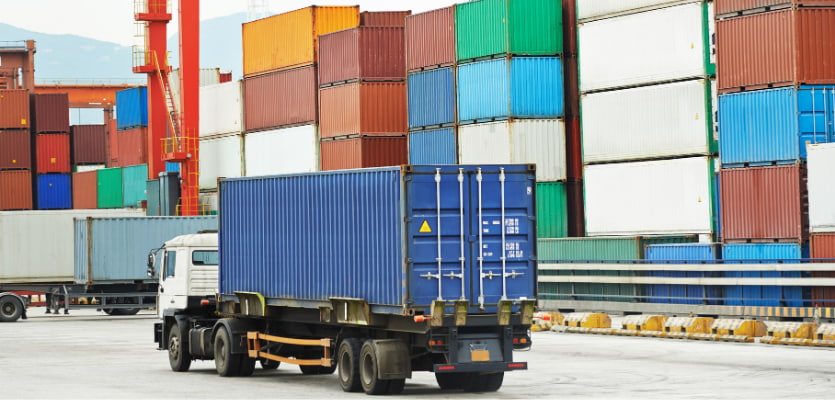
Intermodal Definitions
20 Intermodal Definitions for Anyone Getting Started in Intermodal Freight Shipping.
One of the most challenging parts of intermodal freight transportation is that there are many intermodal definitions, terms and acronyms to know. This can make it hard for anyone to understand what’s happening, no matter how experienced they are.
That’s why we created this intermodal definitions glossary. We define all the words you need to know when working with intermodal freight transport.
* The following intermodal definitions are not in alphabetical order but mimic the flow of an intermodal freight shipping process.

Intermodal
Intermodal refers to a transportation method involving more than one form of transport during a single trip.
Intermodal broker
An intermodal broker is a company that helps shippers and receivers connect with carriers to move goods.
They act as the go-between, facilitating the process and taking a commission or fee while providing discounts and preferred rates.
Freight forwarder
A freight forwarder is a company that books shipments and manages intermodal transport.
They manage intermodal shipping logistics by providing access to rail lines, trucks, cargo vessels, and warehouses. A good intermodal partner will also provide regular updates on your shipment and additional services, such as insurance for your cargo.
Consignee
The party to which freight is delivered. The consignor delivers the freight to the consignee (recipient).
Consignor (or shipper)
The individual or organization shipping freight to a consignee.
Containerization
Containerization is a means of intermodal freight transport using container-sized units to handle cargo. This system allows intermodal transportation to function more smoothly.
Intermodal container
Intermodal containers are freight transport units that can be used across different modes. They’re reusable and interchangeable and come in a range of standard sizes. The 20 ft equivalent unit (TEU) is the most common intermodal container.
RaileGateway specializes in 53′ and 40-high cube dry van intermodal containers. Request your free quote here on how we can help you save on your rail transportation costs.
Container interchanges
A miscalculation can happen, and sometimes, a carrier can end up with a surplus of containers at a particular location while other carriers have free space and active requirements.
In that way, a container interchange is an agreement where a carrier transfers one or more of his extra containers to be shipped onto another’s carrier vehicle.
Breakbulk
Breakbulk cargo refers to goods that are not shipped in containers. This cargo is handled and transported individually instead of consolidated into a container.
Intermodal ramp
An intermodal ramp is a loading dock at an intermodal facility that allows cargo transfer between rail or road vehicles.
When a container arrives at an intermodal ramp, it is unloaded from either the train or truck it was on to be put onto another one and shipped to another ramp or directly to the final destination.
Intermodal vehicle
An intermodal vehicle is specially designed for intermodal transport and may include features like multiple axles, front or rear-mounted cranes, or multiple floors, allowing for double-stacked containers.
They can be trucks, container ships, trains, or cargo aircraft, which cover the four modes of transportation used by intermodal freight logistics companies.
Full truckload shipment
In the trucking industry, a full truckload shipment is one in which the whole vehicle is used to transport a given quantity of goods.
In intermodal rail transportation, a full load is a shipment where a single shipper’s cargo is transported in the same container.
Less than truckload intermodal shipments
A less-than-truckload shipment is when the quantity of goods fills only part of the truck or container (rail).
Shipping consolidation
Shipping consolidation is a freight transportation strategy that combines multiple shipments into a larger shipment, eliminating the need to pay for multiple smaller shipments.
Last-mile
The last-mile delivery is the final leg of a product’s journey to the customer and is typically the most expensive. With more flexibility on the road, truck drivers are typically responsible for the last-mile delivery during an intermodal service route.
Accessorial Charges
An accessorial charge is an additional fee included in an intermodal transport invoice by logistics companies for services over and above a standard pick-up.
They include but are not limited to storage, scale fees, and detention. Check out our blog post here for a complete guide to accessorial charges.
Drayage
This is the total cost of transporting intermodal freight containers a short distance and includes accessorial services and expenses such as receiving, loading, unloading, and other transport terminal and rail yard costs.
Dry bulk cargo
Dry bulk cargo in intermodal shipping involves the transportation of commodities such as coal and grain in large quantities. Other examples of dry bulk freight are sand, gravel, salt, sugar, cement, etc.
Raw materials
Raw material intermodal shipments often refer to dry bulk cargo.
Dangerous goods (Environmental Hazards)
A dangerous good is a cargo with special requirements regarding transport and packaging for safety reasons and environmental damage prevention.
Other Intermodal Definitions That You Can Come Across in Shipping:
Agent- a person with limited or complete authority who handles a business on behalf of another company.
Bill of Lading- a legal contract between the carrier, broker, agent, and shipping company.
Classification- this is a technique used for shipments that are less than truckloads.
Transit time- the total amount of time spent from the distribution centre to the delivery point
Axle Load- this is the weight of the axle put on highways
Brokerage license- A legal document that a broker should have before making any freight shipping arrangement
Cartage- cargo that is transported within the same city or locality
Concealed damage- damage that is seen when the package is opened
Interline- This is where the primary carrier transfers the shipment to another carrier before it reaches its destination.
Adjustments- these are expenses that arise after delivery of the cargo. It is also the difference between the first figure quoted at the distribution centre and the final amount paid in the final delivery.
Blind shipment- In a blind shipment, the shipper and receiver are strangers. They get all the information needed from the Bill of Lading document.
Bulk Freight- This is the intermodal cargo that isn’t in a container ship. This freight could be sand or crude oil.
Nested- Loading of materials so that one item gets inside another. Nesting is mainly done in less than truckload shipping and helps reduce the total space occupied.
Volume rate- this is the term used to measure intermodal cargo if they are less than truckload.
Beneficial Cargo Owner- the actual owner of the intermodal freight that is being shipped.
Outgate- this is the process of checking a container out of an intermodal facility
Tank car- This is a car that is used in intermodal shipment of compressed or liquid cargo
Intermodal Definitions and Acronyms
(AAR) – The Association of American Railroads
(APGCI) – Asia-Pacific Gateway and Corridor Initiative Canada
(ATAC) – Air Transport Association of Canada
(BoL) – Bill of lading
(BCO)- Beneficial Cargo corner
(eBL) – Electronic bill of lading
(BTS) – Bureau of Transportation Statistics
(CAGR) – Compound Annual Growth Rate
(COFC) – Container on a flatcar
(CTA) – Canadian Transportation Agency
(CTA) – Canadian Trucking Alliance
(FTA) – Free trade agreement
(FTL) – Full truckload
(IANA) – Intermodal Association of North America
(ISO) – International Organization for Standardization. ISO is technically not an acronym. It refers to the ancient Greek term “ísos,” which means equal or equivalent to. For a complete list of ISO general-purpose containers, click here.
(LTL) – Less than a full truckload
(MTO) – Multimodal transport operator
(RAC) – Railway Association of Canada
(TAC) – Transportation Association of Canada
(TEU) – Twenty-foot equivalent unit. This is a calculation based on the measurements of a 20ft standard shipping container.
(THC) – Terminal handling charges
(TOFC) – Trailer on a flat car
FAQs
Why Is It Called Intermodal?
The term intermodal is derived from the Latin words “inter” (meaning between) and “modus” (meaning way). The intermodal definition can then refer to a way of moving goods easily, changing modes of transportation.
What Are the Four Intermodal Means of Transportation?
Rail, water, road, and air are the four intermodal transportation means.
What Is the Difference Between Intermodal and Multimodal Transport?
Multimodal transport is the transportation of goods using more than one mode of transport with a single carrier. While intermodal shipping specifically refers to shipments handled by several different shipping companies.
What Is Intermodal Shipping vs. Transloading?
Intermodal shipping involves moving containers between trucks and trains to transfer goods. Transloading, however, involves moving individual items from one container to another between two or more modes.
What Role Does a Cargo Ship Play in Intermodal Transportation?
Cargo ships are merchant vessels carrying goods, supplies, and materials between ports, handling international shipping trade between countries. Ocean carriers are often the first step in the receiver’s intermodal freight journey. Or as the last step in a sender fulfilling their shipping obligations.
Why Is Intermodal Transport Necessary for Economic Growth in the Shipping Industry?
From automobiles to food, luxury items such as toys and electronics are frequently delivered via ocean freight. Maritime shipping accounts for 53% of U.S. imports and 38% of U.S. exports — more than any other logistics shipping method.
Once a shipment arrives in port, it is the role and responsibility of the intermodal carrier to move and distribute products and goods effectively to prevent congestion and delays.
What is a TOFC in intermodal shipping?
TOFC stands for Trailer on Flatcar, where a truck trailer is transported via rail.
What is a COFC in intermodal freight?
COFC stands for Container on Flatcar, referring to an intermodal container placed directly on a rail flatcar.
What does drayage mean in intermodal transport?
Drayage is the short-haul movement of freight between terminals or from terminal to final destination.
What is an intermodal terminal?
A facility where containers are transferred between different transport modes, such as truck to rail.
How do intermodal definitions relate to shipping insurance?
They clarify responsibilities and risks, which are essential when assessing liability and submitting claims.
Are intermodal definitions consistent globally?
Many terms are standardized, but there may be regional variations—always verify with local carriers.
Closing Remarks
Armed with the top 20 intermodal definitions, you now have a powerful toolset to enhance your shipping strategy in 2025. The intermodal logistics world operates on precision, speed, and communication—and clear, shared terminology is what makes that possible. Whether you’re working with a logistics partner, negotiating contracts, or filing a damage claim, having a firm grasp of these intermodal definitions give you a strategic edge.
The value of learning intermodal definitions extends beyond theoretical knowledge. When applied, this vocabulary improves shipping documentation, strengthens compliance, reduces miscommunication, and supports stronger working relationships across your entire supply chain. It also reduces costly errors that can arise from misunderstandings about processes, responsibilities, or shipment status.
These intermodal definitions also allow you to extract greater value from your partnerships with 3PLs and freight forwarders. Rather than relying solely on outside parties, your team can engage in informed dialogue and play an active role in shipment planning, negotiation, and execution. You’ll be better equipped to assess rates, track shipments, and understand carrier limitations.
Mastering intermodal definitions also supports better internal operations. Logistics teams, especially those managing multiple routes or high-value cargo, benefit from standardized terminology. It promotes consistency across training, documentation, insurance, and claims handling. In a fast-paced shipping environment like 2025, consistency equals control.
Furthermore, intermodal definitions help you adapt quickly to changes in regulations, equipment standards, and service models. As sustainability and digitization reshape global shipping, those with a working fluency in intermodal terms will navigate change more easily and maintain a competitive edge.
To continue building your knowledge base, we recommend staying updated through reputable logistics resources, including government transport agencies, rail and port authorities, and global freight associations. By keeping intermodal definitions top of mind, you’ll strengthen your shipping foundation and enhance your ability to scale with confidence.
In conclusion, understanding and applying intermodal definitions is no longer optional – it’s essential for shipping success in 2025. Use this guide as a living document, revisit it often, and share it with your team. The better your command of intermodal definitions and language, the smoother, safer, and more successful your shipping operations will be.
Want to know more about RailGateway? Looking for a competitive intermodal freight transportation quote? Request your FREE, no-obligation offer here.
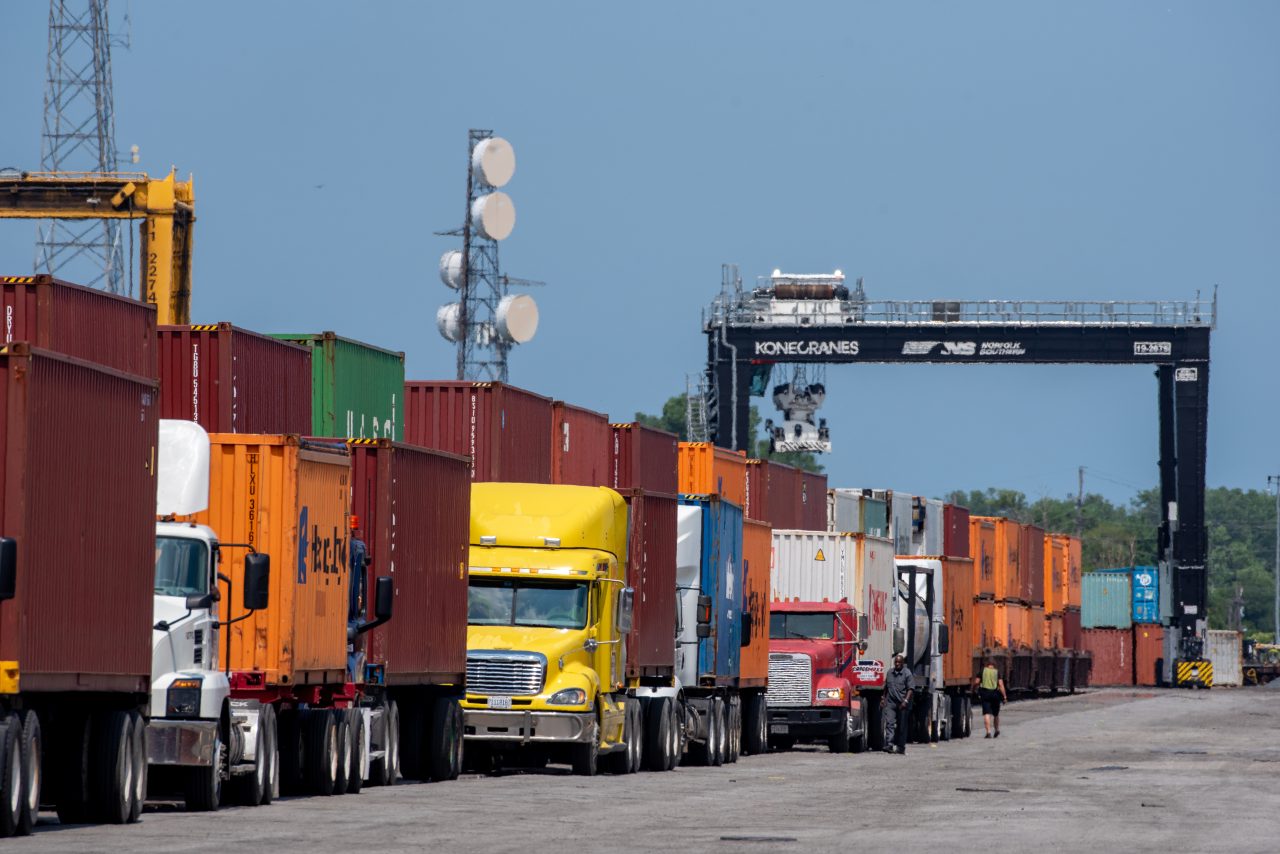
Additional Resources
- Federal Railroad Administration (FRA)
- Bureau of Transportation Statistics – Intermodal Freight
- Transport Canada – Freight Rail
- Association of American Railroads – Glossary
- UIC Intermodal Terminology Guide
- CN Rail – Intermodal Services
- CPKC Intermodal Services
- American Association of Port Authorities – Rail Access
- World Shipping Council – Container Shipping Terms
- Intermodal Association of North America (IANA)
How We Can Help
For businesses looking to optimize their freight shipping with reliable, efficient, and cost-effective solutions, RailGateway.ca is your trusted partner in intermodal logistics. Whether you’re new to freight trains or want to enhance your existing supply chain, our team of intermodal experts is ready to guide you every step of the way.
Contact RailGateway.ca today for a free quote or to speak directly with one of our experienced intermodal specialists. Let us help you unlock smarter, smoother shipping solutions tailored to your unique needs.
Visit RailGateway.ca or call us to get started on transforming your freight shipping strategy in 2025 and beyond.

